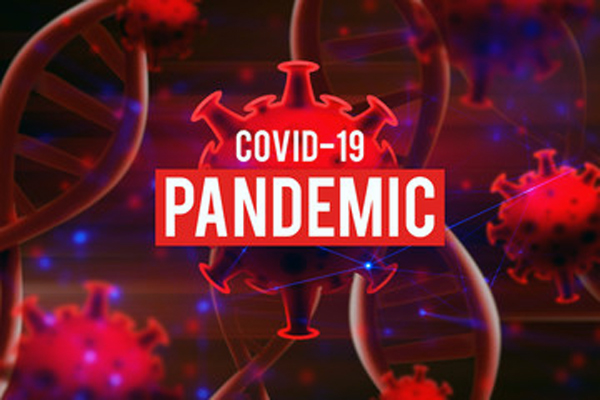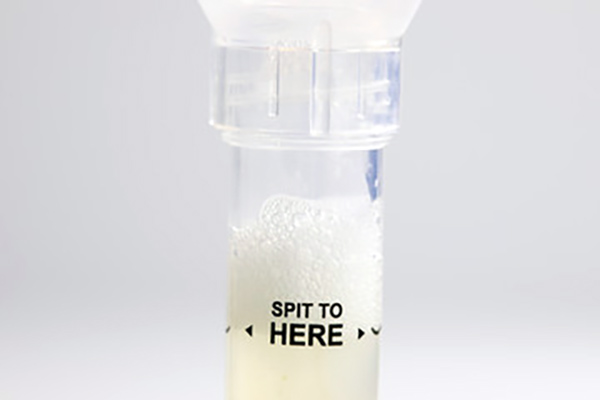A single virus, SARS-CoV-2, has plunged the entire planet into a health, socioeconomic and political crisis. The short, medium, and long-term effects are potentially devastating.
A relatively low direct mortality rate (approximately 0.3 to 0.8% depending on the population) facilitated the spread of this highly contagious respiratory virus. However, the elderly and those with chronic diseases, especially diabetes, suffer substantially higher death rates. Moreover, contagiousness seems to have risen since the beginning of the epidemic due to mutations. Beyond the numbers describing direct mortality, the overall health impact (including COVID-19’s negative knock-on effect on the treatment of other diseases) will undoubtedly be high.
Finally, we tend to overlook the severity of infection that leads to high numbers of intensive care admissions, including among young people, and leaves many with persistent symptoms. Approximately 30-40% of infected individuals continue to suffer from exhaustion, respiratory difficulties, and a loss of smell and taste three months after recovery. COVID-19’s broad impact unfortunately makes it very clear that infectious diseases, especially viral diseases, continue to be a constant threat to humans.
Key questions remain about our lack of preparedness. We must address the challenges of coordinating large-scale international institutions, especially recognizing that a reformed World Health Organization (WHO) – with the support of its member states – has a central role to play in this coordination process. The lack of a “scenario,” in the military sense, to anticipate the overall health effects of a viral pandemic, and its accompanying psychological, social, economic, and political consequences, has been painfully evident. In this context, I would like to emphasize the following three points:
1. The importance of diagnosis in controlling infectious diseases is generally underestimated.
We need to develop quicker, more effective approaches so that people can genuinely benefit from technological advances in identifying infections. Diagnostic tests play a key role in controlling any infectious disease, particularly COVID-19.
Despite tangible progress in developing treatments and vaccines, we will live with this virus for many months to come. That means we need to completely rethink the way we organize our professional, family and personal lives. Rapid, wide-spread use of diagnostic tests will be crucial for monitoring infections in schools, workplaces, restaurants and elsewhere, serving as a vital pillar for a comprehensive public health policy that carefully considers the socioeconomic impact of health measures. Yet, the gulf between the significant technical advances in diagnostics and the slow pace of their application among populations worldwide remains striking.
For example, a recent Global Virus Network (GVN) conference clearly demonstrated that rapid tests using both antigen and molecular techniques are available and would help considerably in containing infection. New approaches based on rapid sequencing or pooling (performing initial tests on pooled samples) are also being developed.
Sampling techniques need to be better suited for rapid screening. Why are we still only working with nasopharyngeal swabs? These devices are unpleasant and therefore impossible to use repeatedly on adults as well as children. Furthermore, swabs sometimes give rise to false negative results because of the wide range of sample collection techniques. Conversely, saliva tests performed under controlled conditions could form the basis of an effective, large-scale rapid testing strategy, with repeated testing compensating for any potential lack of sensitivity.
Finally, the massive growth in digital applications has paved the way for a new approach to monitor infection (beyond mere tracking), with educational and entertaining “apps” being developed for children and adults. Controlling pandemics will rely largely on our ability to monitor contamination in near real time, to inform, and to educate. Is this a utopian scenario, or a pipe dream? No, and it is up to us to create these tools. With that in mind, the GVN and USF Health have begun working with the research group of Dr. Pardis Sabeti at the Broad Institute in Boston and Sarasota Military Academy to develop such rapid testing and digital-based communications. Tests must be approved and validated with extreme care, but the validation process cannot remain confined to the national level. Cooperation between academic institutions and industrial stakeholders can help drive new approaches for rapidly developing and approving new tests.
Clearly, we cannot produce a test if we don’t know what virus we are looking for; however, we can at least predict the technical problems we will likely encounter in devising novel tests. We must build upon current successes with vaccines. The U.S. has invested heavily in the development of new SARS-CoV-2 vaccines, and its Biomedical Advanced Research and Development Authority (BARDA) played a key role not only in funding, but in promoting interactions between academics and industry. Several countries have already secured access to vaccines by making deals with pharmaceutical companies, even though the vaccines were still under development. The Coalition for Epidemic Preparedness Innovations (CEPI), a partnership of academic institutions, industry stakeholders, governments, WHO and major foundations such as the Bill & Melinda Gates Foundation and the Wellcome Trust, was set up in 2015 following the Ebola virus crisis. This coalition has helped speed the production of large quantities of vaccines. We should draw inspiration from these vaccine investments and initiatives to make us more effective in the field of diagnostics.
2. Improving the training and recruitment of virologists is vital.
The importance of training and recruiting a new generation of virologists has been underestimated worldwide. Although many scientists demonstrate remarkable expertise in molecular virology, we lack virologists with both training in “conventional” virology, including virus culture, and a cross-disciplinary approach to research. Several institutions have partnered with industry to introduce outstanding training programs, with excellent teaching and supervision and tutoring for students. We need stronger investment in this field to organize cross-disciplinary virology training programs that meet real-world needs and support recruitment of the best and brightest students. This is what has been reinforced at USF Health, with the recent online course developed in partnership with GVN.
3.COVID-19 has intensified the need for international and independent scientific collaboration, incorporating new ways of organizing research.
Research organizations, agencies, universities, and hospitals play a vital role in research, especially when it comes to viral diseases. Moreover, WHO can and must play a central role in coordinating efforts to tackle viral pandemics. Restructuring WHO is crucial to this process, but realistically we must focus on two areas in particular to help strengthen the work of all these institutions.
First, and particularly relevant in a health crisis, we must promote risk-taking and responsiveness beyond what can be achieved by traditional review procedures. At USF Health, as well as within the GVN, I have witnessed how we can generate truly innovative ideas. International calls for proposals need to target projects that take risks and are reviewed based on the quality of the project proponents. The Grand Challenges initiative, coordinated by the Bill & Melinda Gates Foundation, the Wellcome Trust and others, is a step in the right direction — but it does not go far enough.
Secondly, research networks can complement the effective operation of institutions in responding to pandemics. They embody flexibility, avoid placing scientists in burdensome institutional positions, do not need a return on intellectual property, and distinctly focus on dialog and collaboration – all of which allows them to support meaningful responses to health crises. Research networks also embrace changes in interpersonal communication and interaction brought about by the emergence of social media.
Several such networks already exist. The Global Outbreak Alert and Response (GOARN) network set up by WHO is a step forward but for obvious reasons linked with the size and workings of WHO, it cannot perform with optimal flexibility and efficiency. The concept of research networks, therefore, requires greater recognition, and the independence of these networks must be guaranteed by support from a variety of private and public partners. The National Science Foundation (NSF) in the U.S. recently launched a call for proposals for “networks of networks,” reflecting the importance of the research network as a means of organization to accelerate scientific discovery and highlighting the need for individual networks to coordinate their efforts.
By now it is clear that we are not just dealing with a serious health crisis; we are witnessing the dawn of a new era. The recently announced effectiveness of the first vaccines against COVID-19 is a breakthrough, lifting global hope. But, we still need to learn lessons from this pandemic including fostering international cooperation and adapting our research efforts so that we are better aligned to tackle future pandemics.
Christian Brèchot, MD, PhD
Senior Associate Dean for Research in Global Affairs,
USF Health Morsani College of Medicine
Associate Vice President for International Partnerships and Innovation,
USF Professor, Department of Internal Medicine
President, Global Virus Network





